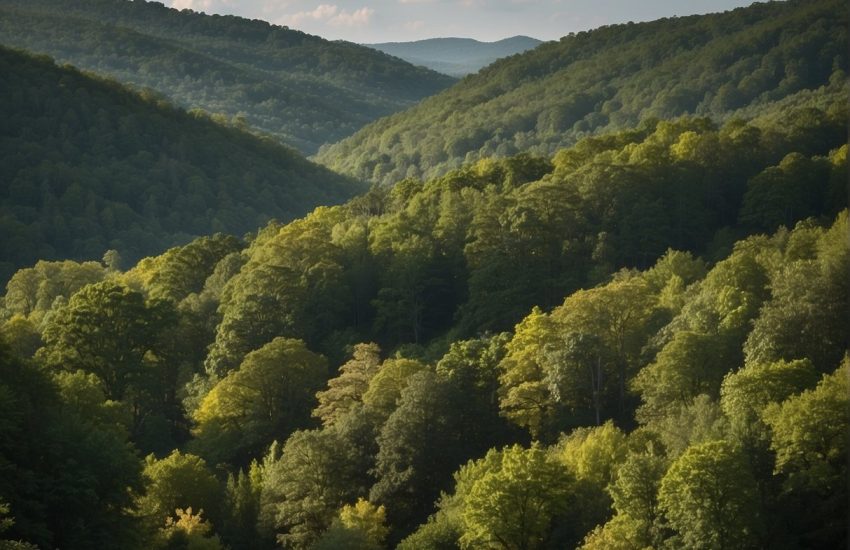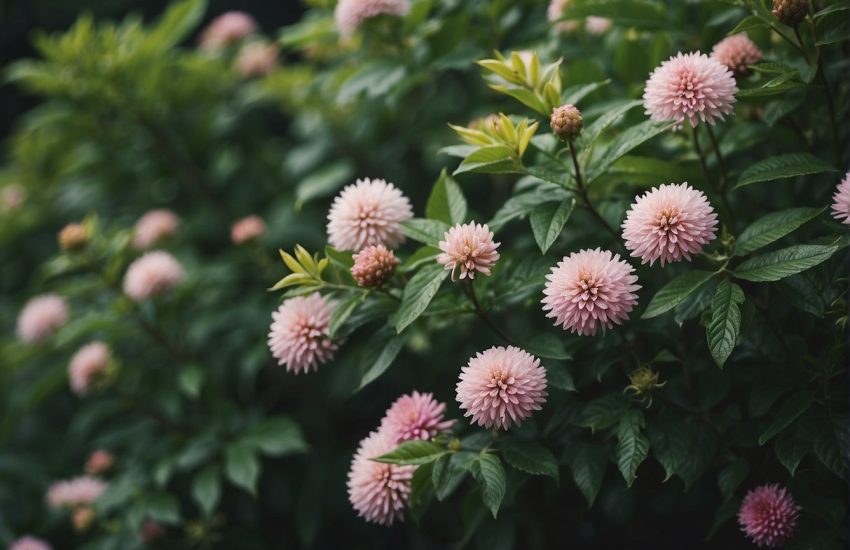Trees with Purple Flowers in Tennessee: A Guide to Identifying and Appreciating Them
Tennessee is home to a variety of trees that bloom in the spring, including those with beautiful purple flowers. These trees not only add a pop of color to the landscape but also provide important ecological benefits such as attracting pollinators and improving air quality.

One popular tree with purple blooms found in Tennessee is the Eastern Redbud. This deciduous tree typically grows up to 30 feet tall and produces clusters of small, pinkish-purple flowers in early spring before its leaves emerge. The Eastern Redbud is a hardy tree that can thrive in a variety of soil types and is often used as an ornamental tree in residential landscaping.
Another tree with purple flowers commonly found in Tennessee is the Jacaranda. While not native to the area, Jacaranda trees have been introduced and can be found in some gardens and parks. These trees produce large clusters of vibrant, lavender-blue flowers in the late spring and early summer, creating a stunning display of color.
Popular Trees with Purple Flowers in Tennessee
Tennessee is home to a variety of beautiful flowering trees that add color and vibrancy to the landscape. Among them, trees with purple flowers are particularly striking. Here are some of the most popular trees with purple flowers in Tennessee.
Eastern Redbud
The Eastern Redbud (Cercis canadensis) is a small ornamental tree that is native to eastern North America. It is known for its stunning pink to purple flowers that bloom in early spring, before the leaves emerge. The flowers are pea-like and grow in clusters along the branches. The Eastern Redbud is a hardy tree that can grow up to 30 feet tall and is adaptable to a variety of soil types. It is a popular choice for landscaping and is often used in parks and gardens.
Crape Myrtles
Crape Myrtles (Lagerstroemia indica) are a popular choice for landscaping in Tennessee due to their showy flowers and attractive bark. They are known for their long-lasting blooms, which can range from white to pink to purple. The flowers grow in clusters at the ends of the branches and are often compared to crepe paper. Crape Myrtles can grow up to 30 feet tall and are adaptable to a variety of soil types. They are also resistant to many diseases and pests, making them a low-maintenance choice for homeowners.
Purple Smoke Tree
The Purple Smoke Tree (Cotinus coggygria) is a deciduous tree that is known for its unique, smoky-purple flowers. The flowers bloom in early summer and are followed by a display of reddish-purple leaves in the fall. The Purple Smoke Tree can grow up to 15 feet tall and is adaptable to a variety of soil types. It is a popular choice for landscaping due to its striking appearance and low maintenance requirements.
In conclusion, Tennessee is home to a variety of beautiful trees with purple flowers. Whether you’re looking for a small ornamental tree or a larger shade tree, there is sure to be a tree that will meet your needs. Consider Eastern Redbuds, Crape Myrtles, and Purple Smoke Trees for a stunning addition to your landscape.
Cultivation and Care

Planting Tips
Trees with purple flowers are a beautiful addition to any garden, and Tennessee has a variety of options for those looking to add some color to their landscape. When selecting a tree, it’s important to consider the size and shape of the tree, as well as its growth rate and overall hardiness.
When planting a tree with purple flowers, it’s important to choose a spot that receives full sun or partial shade. These trees prefer well-draining soil and can be planted in a variety of soil types, as long as they are not too wet. It’s also important to water the tree regularly during the first few years of growth to help establish a strong root system.
Maintenance and Pruning
Trees with purple flowers are generally low-maintenance and do not require a lot of pruning. However, it’s important to remove any dead or damaged branches as soon as possible to prevent the spread of disease. Regular pruning can also help maintain the shape and size of the tree.
To keep the tree healthy, it’s important to provide it with adequate water and nutrients. This can be done by applying a slow-release fertilizer in the spring and watering the tree regularly during periods of drought.
Disease and Pest Resistance
Trees with purple flowers are generally resistant to pests and diseases. However, it’s important to keep an eye out for common problems such as leaf spot, powdery mildew, and aphids. These issues can be treated with a variety of organic or chemical treatments, depending on the severity of the problem.
Overall, trees with purple flowers are a great addition to any garden in Tennessee. With proper care and maintenance, these trees can provide years of beauty and enjoyment.
Regional Considerations

Geographical Areas
Tennessee is home to a diverse range of geographical areas, each with its own unique climate and soil conditions. The Appalachian Ridge and Highland Rim regions, for example, tend to have higher elevations and cooler temperatures than the Gulf Coastal Plain. These variations can affect the growth and blooming patterns of trees with purple flowers.
In the Appalachian Ridge and Blue Ridge regions, for instance, the cooler temperatures and higher elevations can lead to a later blooming season for many tree species. On the other hand, the milder winters in the Gulf Coastal Plain can allow for earlier blooming.
Climate Adaptability
When considering trees with purple flowers in Tennessee, it’s important to take into account the climate adaptability of different species. Some trees may thrive in certain regions but struggle in others due to factors like temperature, rainfall, and soil conditions.
For example, the Eastern Redbud (Cercis canadensis) is a popular tree species in Tennessee that produces stunning pink or purple flowers in early spring. However, it tends to prefer well-drained soils and may struggle in areas with high moisture levels.
Other tree species, like the Jacaranda (Jacaranda mimosifolia), are native to warmer climates and may not be able to tolerate the colder temperatures of certain regions in Tennessee.
Overall, when selecting a tree with purple flowers for a specific region in Tennessee, it’s important to consider both the geographical area and the climate adaptability of the species in question.
Additional Ornamental Trees and Shrubs

Deciduous Shrubs with Purple Flowers
Tennessee is home to a variety of deciduous shrubs that produce beautiful purple flowers. These shrubs are an excellent addition to any landscape, adding color and interest throughout the growing season.
One popular choice is the Purple Leaf Sand Cherry (Prunus x cistena), which produces fragrant pink flowers in the spring and has striking dark purple foliage throughout the summer. Another option is the Smokebush (Cotinus coggygria), which produces large clusters of smoky pink flowers in the summer and has attractive purple foliage in the fall.
For those looking for a shrub with a more unique shape, the Japanese Barberry (Berberis thunbergii) is an excellent choice. This shrub has a compact, rounded form and produces small purple flowers in the spring, followed by bright red berries in the fall.
Native and Adapted Species
In addition to ornamental shrubs, Tennessee is also home to a variety of native and adapted species that produce beautiful purple flowers. One such species is the Eastern Redbud (Cercis canadensis), which produces clusters of pinkish-purple flowers in the early spring before its leaves emerge. Another option is the Red Maple (Acer rubrum), which produces small clusters of red or purple flowers in the early spring and has striking red foliage in the fall.
For those looking for a smaller tree, the Dogwood (Cornus florida) is an excellent choice. This native tree produces clusters of pink or purple flowers in the spring and has attractive red berries in the fall. It also has beautiful red foliage in the fall, making it a great choice for adding color to a landscape.
Overall, there are many options for those looking to add trees and shrubs with purple flowers to their landscape in Tennessee. Whether you choose an ornamental shrub or a native species, these plants are sure to add color and interest to your yard.


